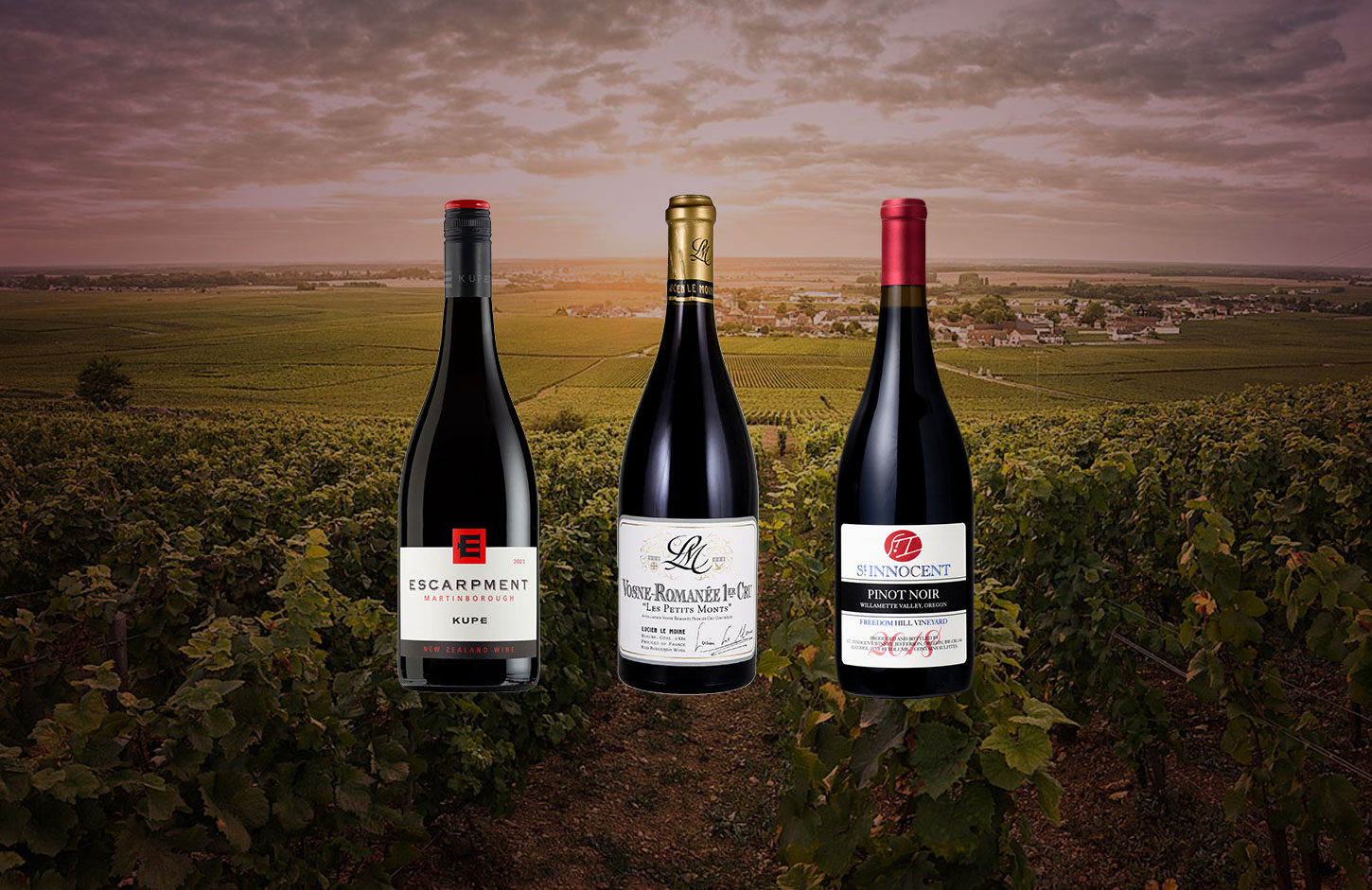In the world of wine, few grape varieties possess the mystique and allure of Pinot Noir. Revered by wine lovers and winemakers alike, Pinot Noir is often considered the ultimate litmus test for a winemaker’s skill and a wine lover’s discerning palate. This grape’s subtle complexities and finicky nature make it a constant source of fascination and challenge. In this article, we embark on a global exploration of the intricacies of Pinot Noir, delving into its various expressions from different corners of the world.
Our journey begins in what is considered the birthplace of Pinot Noir: Burgundy, France. Here, in the hallowed terroirs of the Côte de Nuits and Côte de Beaune, Pinot Noir reigns supreme. The wines from this region are often described as the epitome of elegance, featuring flavors of red berries, earth, and delicate floral notes. The terroir-driven wines of Burgundy showcase how Pinot Noir can reflect the nuances of different vineyard sites, even within a relatively small geographic area. For instance, there are clear and consistent differences between the wines of Volnay and Pommard, even though the villages are separated by just one mile. The Côte de Nuits is predominantly Pinot Noir country. These are the hallowed villages where some say the best Pinot Noir in the world is made:
From the Old World to the New, we find Pinot Noir thriving in the vineyards of California, especially in the cool-climate regions like Sonoma Coast and Russian River Valley. Californian Pinot Noirs tend to be more fruit-forward, with vibrant red and black fruit flavors, often complemented by hints of vanilla and oak. The Golden State’s warm sunshine and diverse soils create wines that are ripe, plush, and approachable in their youth. Here, Pinot Noir thrives best in higher altitude areas. The grape loves a large “diurnal shift” in temperature. That is the difference between the average daytime high temperature and the average nighttime low temperature. Pinot Noir likes to soak up the sun during the day but likes to cool down at night. This helps create a finer wine with greater balance. The most renowned region for Pinot Noir is the Russian River Valley. The Russian River which gives the AVA (American Viticultural Area) its name is the second-largest river within the nine-county Greater San Francisco Bay Area. It is one of California’s coolest and foggiest AVAs, although very warm and sunny from mid-morning until early evening, creating a perfect climate for producing highly acclaimed Pinot Noir.
Just north of California, Oregon has emerged as a formidable player in the world of Pinot Noir. The Willamette Valley, in particular, is celebrated for producing wines that strike a beautiful balance between the restraint of Burgundy and the exuberance of California. These Pinot Noirs often exhibit red fruit purity, lively acidity, and a distinctive minerality that speaks of the region’s unique terroir. Quite a few high end Burgundy producers have bought property in Oregon and are making world class wines there. Here are just a few: Domaine Drouhin, Maison Louis Jadot, and Domaine Méo-Camuzet. Here the Willamette Valley is the most important region especially for Pinot Noir. Although much of the Pacific’s influence is blocked by the Cascade Coastal Mountain Range, the climate in the Willamette Valley can be considered as maritime, with ocean breezes seeping in through a series of gaps in the mountains. Rain falls mostly in the winter, and long, dry summers with ample sunshine and cooler evenings provide an excellent ripening situation for the vines.
Crossing the Pacific, we land in New Zealand, where Pinot Noir has found a new home in the South Island’s Central Otago and Marlborough regions. Here, the cool climate and dramatic landscapes contribute to Pinot Noirs with bright acidity, intense red fruit flavors, and a unique herbal and mineral character. These wines exemplify the adaptability of Pinot Noir to different climates and soils. Again, high altitudes play a key role here particularly in Central Otago. One of the most distinctive features of Central Otago as a wine region is the vineyards that are located on the slopes of the Southern Alps (So named by the English explorer James Cook on 23 March 1770, admiring their ”prodigious height”). As expected the diurnal shift is quite dramatic creating beautiful and very expressive wines.
In Germany, Pinot Noir, known as Spätburgunder, has been quietly gaining recognition. The cool climate of regions like Baden and the Pfalz produces delicate, vibrant Pinot Noirs with a focus on red fruit and spice. While Baden is a cool climate region by global standards, it is the southernmost of Germany’s 13 official wine regions. It is also the warmest. Its relatively sunny, dry climate permits the production of good-quality Spätburgunder. While in Pfalz it is the low-lying, densely forested Haardt Mountains that create an ideal setting for making great Pinot Noir. The mountains cast a rain shadow over the region, and are largely responsible for its relatively warm, dry climate. German winemakers are now crafting elegant Pinot Noirs that showcase their skill and attention to detail.
Even South America has embraced Pinot Noir, with Chilean winemakers cultivating the grape in cool coastal areas like Casablanca Valley. These Pinot Noirs offer a unique fusion of New World fruitiness and Old World structure, often displaying ripe cherry and plum notes with an underlying earthiness. Most of Chile’s wine regions occupy a thin strip down the western coast of the continent, it is home to a wide range of terroirs, and an equally wide range of wine styles. Due to their climate conditions and soil composition, San Antonio and Casablanca valleys have been praised by their Pinot Noir quality and have allowed Chilean producers to deliver outstanding wines. In Casablanca, in particular, the Pacific Ocean helps create the diurnal shift: As the region is only 30 kilometres (20 miles) from the Pacific Ocean at its furthest point, it is strongly influenced by the cooling effects of the Humboldt Current, which flows up the west coast of Chile from the Antarctic. Cooling afternoon breezes blow from the ocean towards the mountains in the east, filling the vacuum created by warm air.
The global journey with Pinot Noir reveals its astonishing versatility and capacity for expression. Whether you prefer the ethereal wines of Burgundy, the bold Californian renditions, or the vibrant New World styles emerging from New Zealand, Oregon, and beyond, Pinot Noir continues to captivate wine enthusiasts worldwide. Its intricate nuances and ability to convey terroir make it a grape variety like no other, proving that the world of wine is indeed a wondrously diverse and endlessly fascinating realm.





